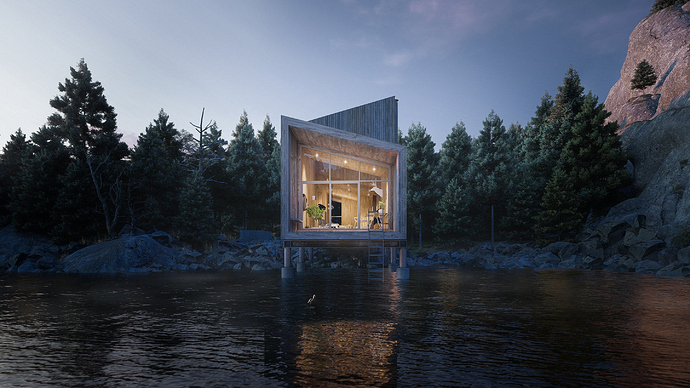Originally published at: http://cabins.ronenbekerman.com/project/vessel-by-forrest-bibeau/
The inspiration for the cabin was to imagine a place where one could be simultaneously connected to the land, sky, and water. The cabin acts as a ‘viewing vessel’ by framing a unique view through each of its central apertures: one to the land, one to the sky and one to the water. The landscape was inspired by the mountains and coasts of British Columbia where one might see vast mountain lakes, lush forests and the occasional glimpse of the northern lights.
The cabin was modeled in Rhino and imported into Lumion where a combination of Lumion and Quixel assets populate the landscape. Some light post-processing in Photoshop helped with final tweaks as well as adding a few furry friends here and there. The Quixel assets were immensely helpful in adding that next layer of realism to the scenes.
Thanks to Ronen and the sponsors for putting on such a great and accessible challenge, it was an excellent opportunity to step into the realm of GPU rendering.


